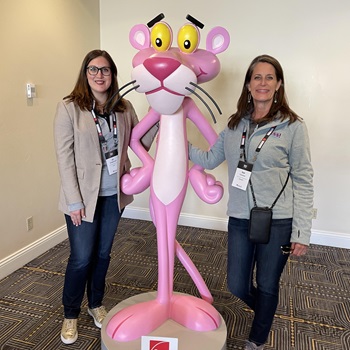Hi all, Ali here! I’m taking over today’s blog to share an insight I’ve gained during the last 90 days. Over the course of my career, I’ve struggled with perfectionism and have found that being a leader means conquering that urge in order to get things done. I wanted to share my tips here should you have emerging leaders who might benefit from my lesson. Ok, let’s jump in!
For as long as I can remember, I’ve been driven to do things in excellence. Whether it was a school project, chores, or even a hobby, I’ve always wanted to do my best. That attitude has been positive in many ways; however, it’s also held me back. I found that if I couldn’t be great at something immediately, I’d stop trying. Or I’d spend countless hours trying to reach perfection on a project, letting other tasks and to-dos pile up.
When I entered the workforce, this increased ten-fold. Now my perfectionism was impacting others, not just me. My procrastination on a task I wasn’t sure how to handle created a down-stream effect, causing others to work at the last minute. Spending more time than I should on non-critical tasks took time away from more important work. Over the years, this habit hindered my productivity significantly.
I’m happy to report that I’ve found ways to combat my perfectionism, especially this quarter (old habits die hard, right?). Here are the three tools I find most useful:
- Time-Blocking: For difficult tasks that I know will trigger my perfectionistic ways, I set a time block of how long I’ll work on them. This forces me to be focused, not spend countless hours re-tweaking, and ensures I have enough time to accomplish my other work. The added benefit is that I’m not constantly switching priorities and can be more effective by focusing on one task.
- Daily Plan: I also set a daily plan for my work. First, I complete the tasks that must be completed by the following day, then focus on the rest of the week, and so on. This system helps me ensure I’m not waiting until the last minute by putting off tasks I don’t enjoy or am unsure of how to begin. I no longer start with the tasks I most enjoy and are easy for me – instead, I work in order of priority.
- Percentage Perspective: The percentage perspective helps me ensure I’m not wasting time trying to make a product or project just a little bit better while never actually completing it. I’ve embraced the saying that “done is better than perfect,” and use this as a filter for my work. If I’m tempted to spend another hour editing a marketing email, I ask myself if that time will make a concrete difference. Usually, it will only make it about 2% better. Although it’s challenging for me, I realize that hour would be better spent connecting with clients or generating leads. This perspective has helped my productivity immensely.
As I continue to grow in my leadership, I’m committed to breaking my perfectionistic tendencies by focusing on results. These tools have made a difference, and please share them if you have employees or folks in your life who might benefit. For more tools to stop chasing perfection, check out our book: Chasing Perfection; Shatter the Illusion – Minimize Self-Doubt and Maximize Success.
